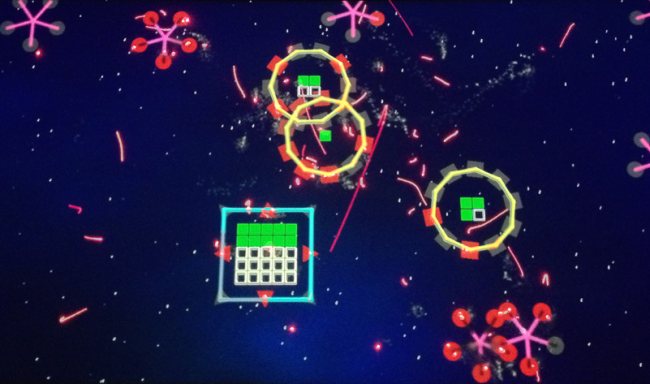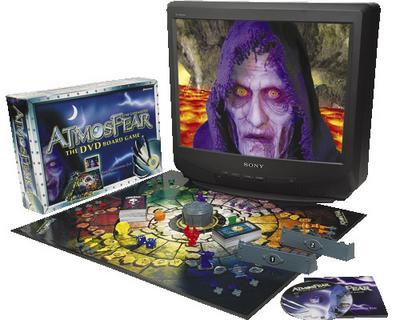The Lasers of Renga: Telling Stories with 100 Protagonists

For the New York City game scene, IndieCade East was a milestone. Never before had an event mobilized all the disparate groups in NYC’s game community, gathering academics and students, indie developers, experimental designers and regular people just interested in games in one place.
While there was no shortage of games to play and things to do, one experience stuck out as a highlight. This game, like many others, had come from out of town. But unlike anything else on display, this game is played not with a keyboard or controller. This game does not have a single-player mode, and it cannot be paused. Instead, this game is played in a movie theater, in the dark, with one hundred players working together against a shared enemy… and each player has a laser pointer.
This game is called Renga.
“100 players shout and scream at each other as the atmosphere builds to its joyous conclusion. They arrive as an audience; they leave as a team.” -John Sear, wallFour
The name Renga comes from a Japanese form of collaborative poetry where poets take turns composing stanzas. In the game, players control an abstract spaceship by pointing their laser pointers at its corners or sides. If enough lasers are shining on the same part of the ship, it’ll start to move in that direction – and that’s the gist of how the game is played. Consensus by laser.
At IndieCade, the 100-odd players started off in near complete disarray, costing us rare opportunities to upgrade our tiny craft. Gradually, over the hour-long running time, we found ourselves tightly coordinating to fight enemies, harvest resources, spend upgrade points and ultimately vanquish the final boss. Like poets taking and ceding authority to compose a group work, the dynamic in the theater was fluid – as people shouted recommendations and posed strategies, players voted with their beams. There was no time for any one person to seize control. Our collective destiny was in the hands of the crowd as the narrative arc of the game took shape, willed into existence by the group.
Through all the chaos and shouts of “Upgrade the engines!” and “No, go for the silo!” something became clear: While there was a definitely a loose narrative of us against the enemies, the true antagonists were in the audience, mixed in among us. In making every action so fraught with tension and uncertainty – will everyone understand the importance of getting that engine? Can we as a group defend our ship long enough to gather resources? – the developers at wallFour had taken the core conflict that would normally be on the screen in any other game (or movie, even) and scattered it among the crowd. Would we pull together in time to succeed? Was it even possible?

Interactive group games like Renga are not a new thing. The short-lived Xbox 360 game 1 vs. 100 pitted gamers against each other in a tense trivia contest. Even earlier in the 90s, the Atmosfear series of board games came packaged with a VHS tape that you’d watch as you played, with a character appearing at random times to interact with the players. Even though the tape would be the same every time, the interaction lent the experience a unique feel. You weren’t just playing the game, you were playing with the game, and it was up to you and the other players to see it through.
Going back even further, the classic Ouija board is another example. Is there a ghostly entity playing with you? Most likely not. But the fact that you still ask gives it its timeless appeal and air of mystery.
So what does this mean for games? Ever since broadband became commonplace, the industry’s focus has been steadily shifting over to multiplayer experiences. With the Wii U’s social network, Nintendo hopes to connect players right out of the box. In their PS4 announcement last Wednesday, Sony declared their intention for an always-on, more easily shared gaming experience than ever. Microsoft will likely follow suit when they show their hand at E3.

But will these companies understand how to leverage their new superpowered networks to create new types of game experiences? Or will all that horsepower just go towards rendering shinier guns in the same 16 player deathmatches?
With a new generation on the horizon and more opportunities for indie developers than ever before, maybe the answer lies with us. Think of Renga’s lasers, and the playful chaos that erupted in the theater. Let’s breathe life into these promising networks of the future. Let’s make some poetry together.
